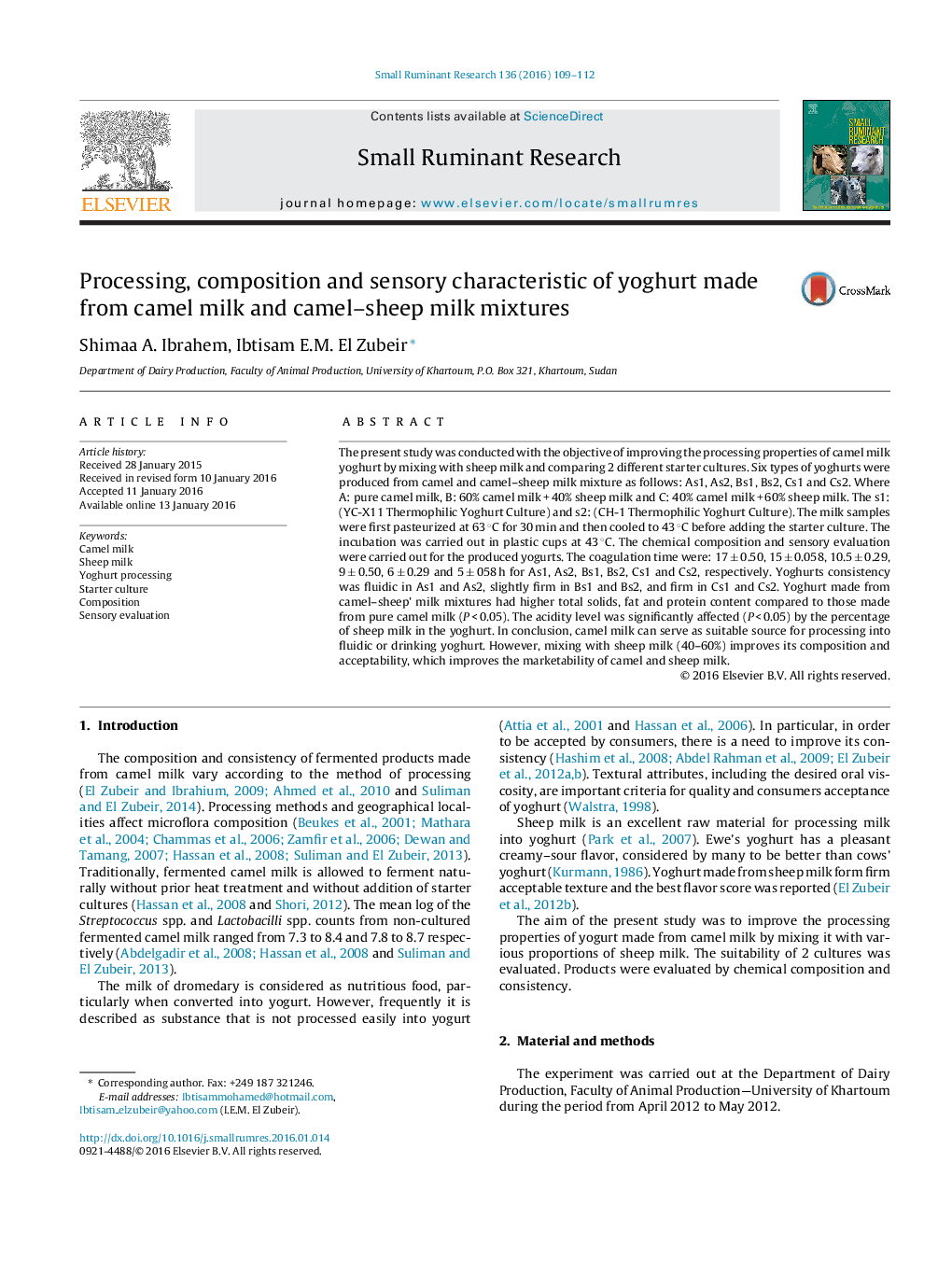| کد مقاله | کد نشریه | سال انتشار | مقاله انگلیسی | نسخه تمام متن |
|---|---|---|---|---|
| 2456703 | 1554356 | 2016 | 4 صفحه PDF | دانلود رایگان |
• We processed yoghurt from camel, sheep and their mixture milks (60 and 40%).
• Yoghurt made after mixing camel and sheep milk showed better processing properties and high compositional content.
• Camel milk could be suitable for processing of fluid or drinking yoghurt.
The present study was conducted with the objective of improving the processing properties of camel milk yoghurt by mixing with sheep milk and comparing 2 different starter cultures. Six types of yoghurts were produced from camel and camel–sheep milk mixture as follows: As1, As2, Bs1, Bs2, Cs1 and Cs2. Where A: pure camel milk, B: 60% camel milk + 40% sheep milk and C: 40% camel milk + 60% sheep milk. The s1: (YC-X11 Thermophilic Yoghurt Culture) and s2: (CH-1 Thermophilic Yoghurt Culture). The milk samples were first pasteurized at 63 °C for 30 min and then cooled to 43 °C before adding the starter culture. The incubation was carried out in plastic cups at 43 °C. The chemical composition and sensory evaluation were carried out for the produced yogurts. The coagulation time were: 17 ± 0.50, 15 ± 0.058, 10.5 ± 0.29, 9 ± 0.50, 6 ± 0.29 and 5 ± 058 h for As1, As2, Bs1, Bs2, Cs1 and Cs2, respectively. Yoghurts consistency was fluidic in As1 and As2, slightly firm in Bs1 and Bs2, and firm in Cs1 and Cs2. Yoghurt made from camel–sheep' milk mixtures had higher total solids, fat and protein content compared to those made from pure camel milk (P < 0.05). The acidity level was significantly affected (P < 0.05) by the percentage of sheep milk in the yoghurt. In conclusion, camel milk can serve as suitable source for processing into fluidic or drinking yoghurt. However, mixing with sheep milk (40–60%) improves its composition and acceptability, which improves the marketability of camel and sheep milk.
Journal: Small Ruminant Research - Volume 136, March 2016, Pages 109–112
